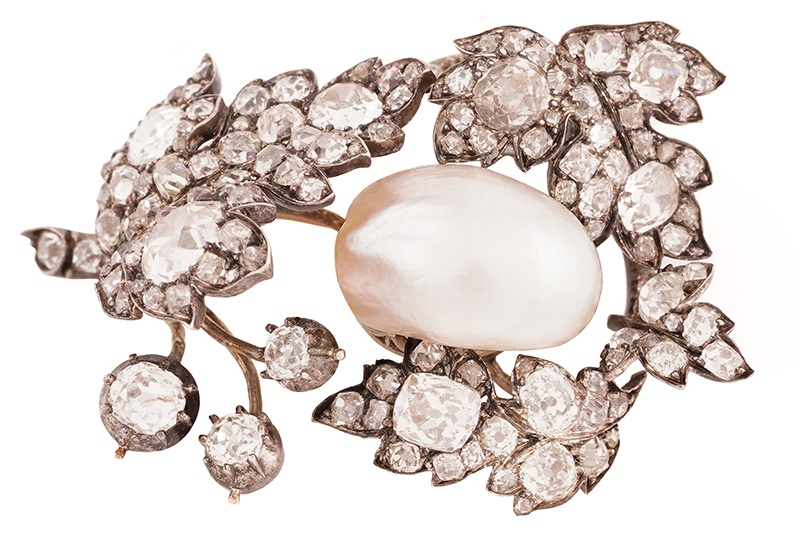How Do I Tell If My Pearls Are Real?
First and foremost, it is important to understand what is deemed a “real” pearl
18/04/2024
Regarded and revered as one of the most valuable gems across the world, pearls have been used for adornment for over 6,000 years. Originally found in rivers and the sea within pearl producing molluscs, for thousands of years pearls have largely been reserved for royalty, dignitaries, and the incredibly wealthy.
This being the case, imitation (fake) pearls have been produced through a variety of methods for more than three centuries. Here, we have put together a guide to help determine if your pearls are real… First and foremost, it is important to understand what is deemed a “real” pearl.
 A Victorian diamond and pearl floral spray brooch
A Victorian diamond and pearl floral spray brooch
Natural pearls have been harvested for thousands of years. They usually form when a foreign body makes its way into a pearl producing mollusc, such as a snail, oyster, or mussel. As a natural defence mechanism, a pearl sac forms around the intruder particle and isolates it using the secretion of nacre. Layer upon layer of nacre over years results in the lustrous gem so coveted by many.
Cultured pearls are created in the same way as a natural pearl, with the exception that human beings insert the foreign body. Depletion and pollution greatly reduced the supply of naturally occurring pearls in the 20th century, which led to their cultivation in vast quantities. Approximately 90% of the pearl trade today is cultured. Both natural and cultured pearls are what we would term “real” pearls.
Belle Époque pearl and diamond cluster bracelet
There is little to no difference in appearance of natural pearls against cultured pearls, the only way to tell the difference is to study the internal structure of the bead using various tests such as a density test or an x-ray. Experts and gemmologists will study the internal structure of a pearl through the drill hole using microscopes.
Whereas fake pearls are essentially imitation beads which have been created to appear like pearls using varying methods and techniques. If you are looking at multiple pearls, such as a strand, pay close attention to the shapes of each pearl. Due to the process involved in the formation of real pearls, their shapes will vary from one another, even if only slightly. Perfectly round real pearls are rare and therefore a strand of flawless round beads will likely be fake.
Use a magnifying glass or loop to study the surface of each bead, real pearls will have an irregular surface with unique features, where imitation pearls will be completely identical. Due to their layered nacre structure, real pearls will have a textured surface; gently rubbing two pearls against each other, or on your front teeth, will feel gritty with some resistance, whereas a fake counterpart will feel smooth or slippery.

An Early 20th-century pearl and diamond pendant necklace
Examine drill holes, any peeling paint in this area will be an indication of a reproduction. Real pearls will feel cold to the touch but will warm up once in contact with your skin. Plastic imitation pearls will stay at room temperature, and while glass beads will also feel cold, they will warm up slower than real pearls.
The most conclusive way to tell if a pearl is real is to take it to an expert valuer, gemmologist, or a gemmological laboratory. Here at Dawsons, we have a team of gemmologically qualified expert valuers who provide a seamless service covering valuation, logistics, marketing, and sale.
Related Articles
How Can You Tell if Jewellery is Fine?
How Can You Tell if a Necklace is Antique?
Do you have any jewellery that you are thinking of selling?
With a global audience of over 10 million, Dawsons can help secure the best price for your pearls.
Get in touch with an expert valuer today for confidential sales advice, we would be delighted to help:
